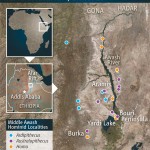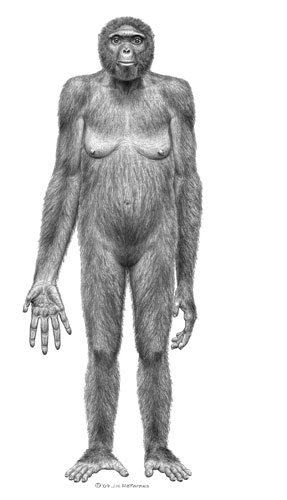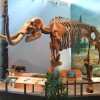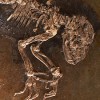The new "oldest" member to our hominid family tree
 During an anthropological expedition in 1992 to the Middle Awash river valley in Ethiopia, a research team led by Tim White uncovered a fascinating, previously unknown fossil Hominid. In 1994, the fossil was named Ardipithecus ramidus. In the Afar language, “Ardi” means ground floor and “ramid” means root.
During an anthropological expedition in 1992 to the Middle Awash river valley in Ethiopia, a research team led by Tim White uncovered a fascinating, previously unknown fossil Hominid. In 1994, the fossil was named Ardipithecus ramidus. In the Afar language, “Ardi” means ground floor and “ramid” means root.
Affectionately known as “Ardi”, some of her features were distinctive. Due to her location in the ancient Ethiopian strata, she was dated to 4.4 million years ago, pre-dating “Lucy” (Australopithecus afarensis) by over a million years. Her brain size was much smaller than Lucy’s but was similar to that of a modern chimpanzee. According to the form of her limbs and pelvis, she was able to walk upright, yet she had a grasping hallux (big toe) on each foot, which suggests that she had an arboreal lifestyle. This theory was supported by the fossils discovered locally near Ardi’s resting place. This “woodland” lifestyle came as a surprise to scientists because Ardi’s descendant, Australopithecus afarensis (“Lucy”), lived on the savannah. Now thoughts on the evolution of bipedalism must be re-threaded. 
To date, Ardi (Ardipithecus ramidus) has replaced Lucy (Australopithecus afarensis) as the oldest hominid fossil. Genetically, the common ancestor between humans and chimps was estimated to exist 6 million years ago. “Ardi” takes us one step closer to that ancestor.
For more on Ardi, see our interview with researcher, Tim White, at the DNALC website here.
Ardi sketch redirected from The Guardian.
| Print article | This entry was posted by Elna Carrasco on November 9, 2009 at 1:25 pm, and is filed under DNA Interactive. Follow any responses to this post through RSS 2.0. You can skip to the end and leave a response. Pinging is currently not allowed. |


